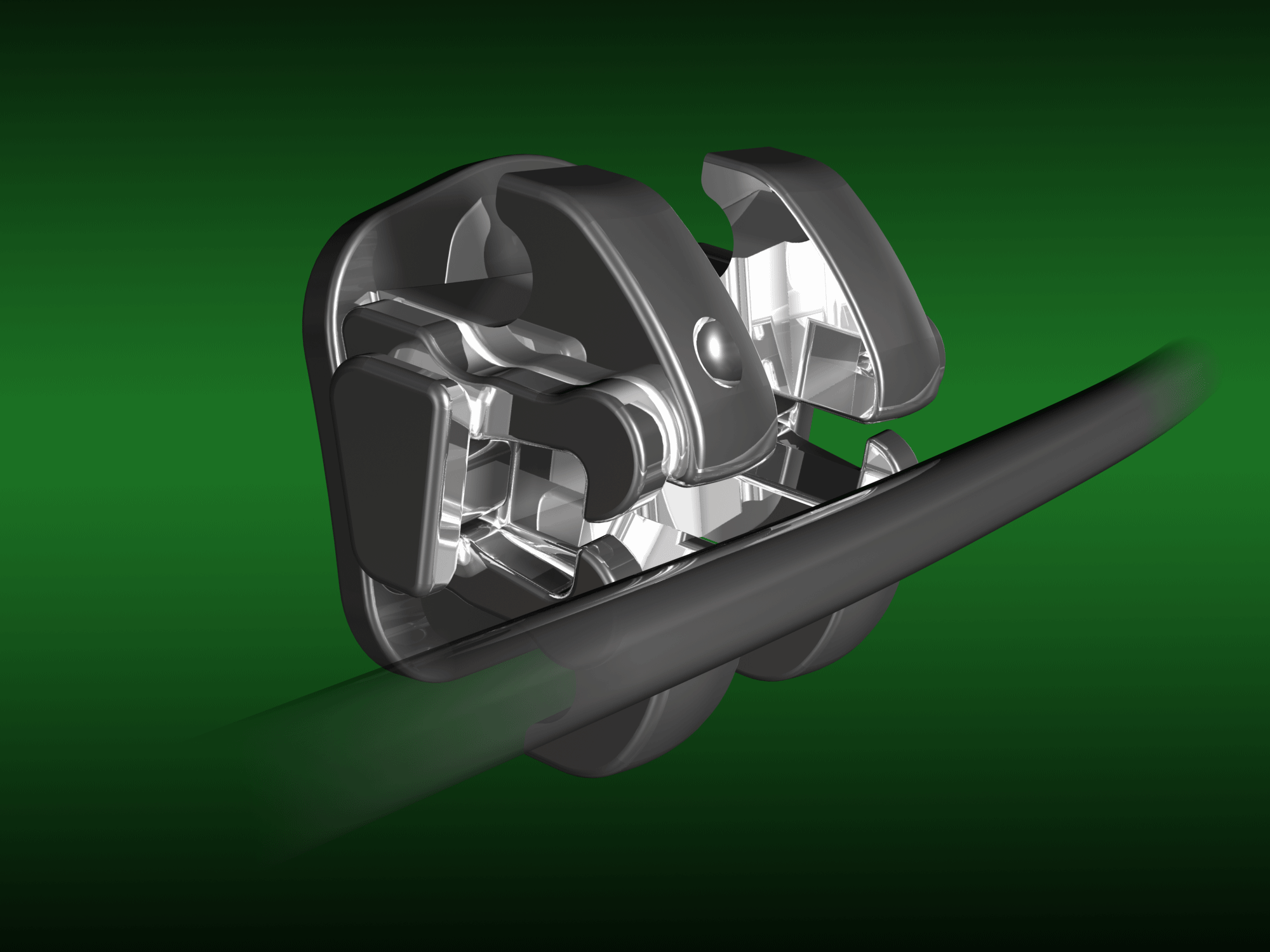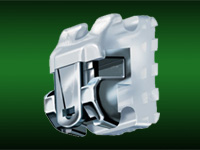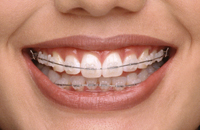Traditional Braces | Self-Ligating | Aesthetic/Clear
Braces, of which there are many types, all provide essentially the same mechanical benefit. They are handles on the teeth, with slots through which a series of increasing-stiffness archwires can be utilized to align the teeth within each dental arch. Once alignment is accomplished, one arch can be pitted against the other to improve bite (occlusal) function via use of such items as elastics (rubber bands) or the> Twin-Force Bite Corrector.
Traditional Braces

The tried and true modality used to treat ANY kind of malocclusion. Campbell Orthodontics uses low-profile brackets/braces which are the most comfortable braces on the market. Low-profile means the braces stick out less from the teeth than ever and therefore are more comfortable to the lips and cheeks!
Back to top
Self-Ligating
 |
 |
| Smart-Clip |
Damon |
- Reduced friction over conventional elastic ligature cases.
- Offer the most benefit for very crowded or spaced cases Quicker appointment times and less appointments means less time away from school or work!
- Can still get colored elastic ligatures on the "Social 6" (the 6 front upper teeth that people can see when you smile)
- Cleaner than traditional braces with elastic ligatures because elastic ligatures can harbor cavity- and bad breath-causing plaque bacteria in their porosities
Back to top
Aesthetic/Clear

- Clarity bracket
- Less metal showing in your smile while in braces
- We offer aesthetic, tooth-colored ties that do not stain like other aesthetic ties when you drink coffee or tea or eat curry-laden foods!
- Great mechanical traits when compared to other aesthetic brackets because 3M Unitek has patented their metal slot…so the wire sees no frictional difference from regular all-metal brackets.
- Rounded edges, not sharp like other aesthetic brackets on the market
- Ceramic, so a little more brittle and fracture-prone than metal braces
- Dr. Campbell only puts them on top teeth (while placing metal on the bottom) because if the ceramic braces are on the bottom teeth, they tend to grind away tooth structure from the backs of the top teeth…not good.
Back to top